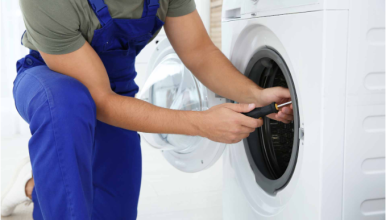Various Metal Finishes and Their Benefits

Ever notice how shiny a metal doorknob is or how the metal in your mechanical keyboard does not rust even if you spilled water on it? Or wonder how a recently produced decorational statue seems antique?
Well, this was done by a process called metal finishing. Metal finishing is the term used for any treatment process such as applying a type of metal coating on the surface of a metallic part. There are a variety of metal finishes being applied on different objects for different specific purposes. Basically every material that has metal embedded on it has a finishing that has the purpose of prolonging its lifespan by preventing corrosion and abrasions. Manufacturers modify the surface of their metallic product by applying metal coating that include paint, ceramic coatings, and lacquer.
Metal finishing has a wide range of techniques and all of these processes focus on the general goal of adding protection to the material against rust and wear. Some additional benefits include the improvement of electrical properties in components to enhance the bonding of organic coatings and adhesives and aesthetic appearance.
So what are the various metal finishing treatments we see in the market today?
- Plating
- Brushing/Cleaning
- Coating
- Polishing
- Blasting
- Grinding
- Vibratory finishing
- Heat Treatment
- Hot Blackening
These different types of metal finishing increases durability, corrosion resistance, chemical resistance, electrical resistance, electrical conductivity, abrasion resistance, aesthetic appeal and many more.
Table of Contents
Plating
Plating or metal plating is a treatment where the manufacturer uses chemical baths to coat the surface of the substrate (or object at hand) with thin layers of metals (zinc, nickel, cadmium, chromium).
Metal plating can be divided into two major methods: Electroplating and Electroless plating. Electroplating uses an electric current to coat a substrate with the desired metal through an electrolyte bath while electroless plating is a non-galvanic method that uses a catalytic reduction that breaks up the material’s ions by only placing the substrate in a solution filled with nickel or copper.
Overall, both methods give the finished product an increase in durability and resistance to corrosion but electroless plating is more popular in industries because of the other benefits it contributes such as reduced surface friction, increased strength and uniform distribution.
Brushing/Cleaning
The brushing or cleaning method uses a finishing machine that removes surface imperfections and creates a uniform, parallel grain surface texture that smoothens the exterior of the product. Also, a wire brush or abrasive belt may be integrated into the finishing machine to remove the slag produced by some welding operations and to remove scale and grit from metal surfaces before it is cleaned. After smoothing out the product, the substrate is then dipped into chemical baths to clean the oil residue left from the processes prior to plating.
Coating
This inexpensive metal finish uses water and oil-based paints to provide protection to metals against corrosion and rust. You can see this finish in cars and calisthenics bars in parks. Also, special paints such as anti-fouling paints are used in metal components that are exposed to harsh environments and marine applications.
Some coating methods such as powder coating not only provide a decorative finish but also increase durability of the substrate.
Polishing
Polishing, also known as buffing, are metal finishing methods that are used to reduce surface roughness in metals after fabrication. These abrasive methods can be done either manually or via machine polisher. Aside from reducing the surface roughness, polishing also increases a metal’s glossiness that improves overall surface appeal.
Blasting
Sand blasting or blasting is used in metal products that require a uniform matte texture. The process uses a blasting machinery that concentrates sand, steel shots, or metal pellets and shoots it onto the substrate at high speed. Thus, giving the result of a smooth, clean product texture on the metal.
Another blasting method called shot peening. It uses a cold working process to address compressive stress in the surface of metals. This blasting method improves fatigue resistance, stress corrosion cracking resistance and fretting resistance.
Grinding
Metal grinding is a metal finish that uses abrasive wheels to smooth out surfaces and reduce a component by grinding away metal ions. There are several types of grinding machines that deliver different grades of smoothness. Then, the most common grinding machine is the surface grinder. It is used to reduce surface roughness on products that just came out of production. But there other special machines such as centerless grinders and blanchard grinders which are used in metalworking for oversized parts.
Also, metal grinding can be done by hand using power tools, grindstones, bench grinders and wheel grinds. Overall, the grinding finish is best applied to hardened steels that require shallow cuts.
Vibratory Finishing
This metal finish uses vibratory finishing machines that clean and smooth out rough edges of the metal product. The products are positioned inside the machine drum filled with abrasive pellets and execute a tumbling vibration that causes the pellets and parts to rub against each other, creating a uniform random texture. The machine’s cycle speed and magnitude of vibration can be adjusted for metal finishing applications of small-large sized parts.
Case Hardening
Case hardening or heat treatment is the process of forming a protective hardened layer around the metal part or product. This method is an important step in many metal manufacturing operations. Specifically for components that are prone to abrasive and high pressure environments.
Several types of case hardening include carburizing, nitriding, cyaniding, and flame hardening.
Carburizing is the process of adding carbon to a metal component. Then, heating it up to 9000 degrees celsius and exposing it to a carbon environment. Nitriding involves heating a metal up to 5000 degrees celsius and exposing it to nitrogen after. Cyaniding integrates nitrogen and carbon into a protective casing by dipping the metal component into a carburizing bath containing cyanide. Flame hardening involves heating a metal with oxy-fuel or oxyacetylene flame and rapidly cooling it with water.
Hot blackening
Hot blackening is a metal finishing process that involves machines that spread a thin layer of black oxide on the product’s surface. This is done to create a matte finish with a high resistance against abrasion. The high-temperature process is commonly used in the production of automotive parts, tools, firearms and other products that require a resistance to high temperature.
Key Takeaway
Choosing among the different metal finishes can be hard if you don’t know what to look for. Each finish must be considered by narrowing it down using factors such as production speed, cost-effectiveness and metal hardness.
Overall, different types of metal finishing have their own benefits and disadvantages. Some have a practical use and some have a simple goal of making a product aesthetic. In the end, you must bear in mind what you might use your metal product for. Because it might be unnecessary to have your faucet electroplated when you could improve its decorative appearance by coating, which costs less.




